Screenrant
Tales from the Dark Universe: Knightfall Writers Finally Break Batman
October 16th, 2019
An Interview with Scott Snyder & Kyle Higgins
Interview by Andrew Dyce
When DC’s Metal introduced readers to the Dark Multiverse, it was obvious the concept had far too much potential for just a single series. Now that roiling sea of alternate realities too violent, too grim, too hopeless to ever survive is being given its own line prestige one-shots. These standalone stories ask the same question: what if a pivotal or iconic DC storyline had turned out differently? And it’s officially begun, with the release of Tales From The Dark Multiverse: Knightfall #1.
The first ‘what if?’ nightmare brings fans back to the story that saw Batman broken by Bane, with Azrael (Jean-Paul Valley) taking up the cowl in his place–before Bruce Wayne returned to put an end to his brutal reign. Bruce defeated Azrael, saving Gotham and sending Valley on his own mission of redemption… but what if he hadn’t? The answer to that question is delivered in Tales From The Dark Multiverse: Knightfall #1 from writers Scott Snyder (Batman: Last Knight on Earth) and Kyle Higgins (Power Rangers: Shattered Grid), and artist Javi Fernandez (Justice League). A vision of Gotham thirty years in the future, when Azrael–sorry, ‘Saint Batman’ rules with gleaming cross and flaming sword, and the most unlikely hero returns to free the city from his tyranny. Screen Rant had the chance to speak with both Snyder and Higgins about how this alternate Knightfall embodies the spirit of the Tales From The Dark Multiverse stories still to come, along with some “giant” events coming in 2020.
With Batman: Last Knight on Earth and Nightwing: The New Order under your belts, neither of you are strangers to hypothetical nightmare realities of the DC Universe. But how did Knightfall, and the question ‘what would Gotham have become if Azrael had won?’ make it onto the shortlist?
Kyle Higgins: The whole initiative really started with Alex Antone, an editor at DC, who started putting together–off of Scott’s awesome work in Metal, and the creation of the Dark Multiverse–this idea of, ‘would there be any interest in exploring some of the other worlds?’ Then from there it became a question of which other worlds? Which stories made the most sense to dive into? I think for Scott and myself both, Knightfall is one of those iconic stories from an earlier generation of Batman that definitely influenced me growing up. So the opportunity to dive in there and see what that might look like through the lens of a broken world, and had Bruce never actually returned to the mantle, what that might look like. Especially based on the idea of who Jean-Paul Valley was at that time, and how mentally ill-equipped he was for the mantle, and that role. It definitely felt like all the great makings to build out a pretty killer new character, and a ‘what if’ scenario, for lack of a better descriptor.
Scott Snyder: For me, I think Knightfall is one of the stories that really haunted me as a kid. Even the first time I read it. I really felt Bruce broken, and really felt he might not get back up. So there was always a question of massive possibility, and there is a real sort of uncertainty around it for me, just as a reader. I remember I genuinely believed he might not come back this time. So the idea of the Dark Multiverse, when we created it for Metal based on all our greatest hopes and fears are material and sort of bubble up into worlds all their own. It felt like a perfect starting place for Tales of the Dark Multiverse series. To go back to one of the stories that felt like it genuinely could have ended a different way, and take it to someplace really imaginative and dark. And then just give Kyle and Javi credit, I just helped a little bit in the plotting. All the great stuff in there from the psychology and the design of Son of Bane, to the way Azrael appears as this kind of broken king. That was all really their doing. So I was just happy to be a part of it and see it become something even more than I hoped it would be.
KH: It was a really cool, exciting opportunity. Because I really started my career writing monthly comics with Scott, with Gates of Gotham together back in 2010, 2011. Then leading into the New 52 with him and Greg [Capullo] on Batman, and then Eddy Barrows and I doing Nightwing, and trading off arcs and certain Court of Owls reveals and things like that. It was cool to kind of slip back into that dynamic here. It had been a few years but I think, not to put words into Scott’s mouth or anything, but it just felt comfortable. Like talking to an old friend again, breaking stories and building it out. So for me it was also a nice return to the DCU after spending the last couple of years in Power Rangers world… where I also built out some authoritarian, broken kings. I’m trying to keep it on brand.
Readers of Flash Forward are going to be familiar with Tempus Fuginaut, but a lot of people might pick up this one-shot and feel like they’ve missed an important story already being told. How much do they need to know?
SS: What I always say is we try to construct things that don’t require you to read beyond the issue itself. So hopefully even if you don’t know who Tempus is, you can get a sense from this and not feel in any way lost. We’re hoping that’s sufficient. But I always say, one of the things that we’re proudest of right now at DC is that we’re trying really hard to build one connected universe. The stuff that we started in Metal in 2017 really comes to a head this year in Justice League, as the story is ramping up to the end now. And more in Batman/Superman with what Josh [Williamson] is building, and what James [Tynion] is going to build in Batman, and in Hell Arisen at the end of Year of the Villain. It’s all connected. The hope is that you’ll read it and won’t feel left out at all by seeing Tempus in there. But you’ll be able to go read Flash Forward, you’ll be able to go read whatever else to get a bigger picture of this expansive tapestry, this immersive, giant soap opera we’re telling that’s going to end in something really huge in 2020.
Batman fans are almost guaranteed to be at least a little familiar with Azrael and Jean-Paul Valley, but for those who haven’t read Knightfall in years, what was it about Azrael that informed the Batman he would become, and the mission he would take?
KH: Well I think there’s two components to that. The first is purely from a kind of, ‘hey, what would that look like?’ standpoint of logistics. It was a lot of fun to take this character and see the longer he was Batman, the more of his authoritarian tendencies started to come to life. Then just before Bruce came back in the original story, he straight-up killed somebody. So extrapolating from that, ‘what might he look like had he defeated Bruce when Bruce came back to try to reclaim the mantle?’ And with the increased level of influence that the St. Dumas programming was starting to take in Jean-Paul Valley. How would that manifest in his leadership? Particularly as he is left to his own devices, and unopposed. So from a world-building standpoint that created a lot of really interesting questions and possibilities.
From a character standpoint though, one of the things that interested Scott and I the most was that this is a guy who knows deep down he was the wrong choice. I think there is a massive inferiority complex there. So as you see in the series, his relationship with broken Bruce Wayne is really the crux of this story, and of this world, and of his decision-making. I think there’s probably a part of me that remembers that era and thinking, ‘why didn’t Bruce call Dick to become Batman?’ Then there was the whole prodigal son storyline that came after that, where Dick did become Batman and addressed some of those choices Bruce made. I think Jean-Paul Valley would definitely feel that, and know that he’s basically another man’s stand-in. I think if they don’t have a solid enough foundation, that can drive somebody mad. That was one of the things that really attracted us to this, and building out what this version of Batman might look like, given where his insecurities and fears in this Dark Multiverse world would really be rooted.
I expected a dark vision of the future, and a pull no punches story, based on the Dark Multiverse one shots from Dark Nights: Metal, but… boy this goes to some incredibly unexpected places very, very quickly. Was that Horror part of the initial idea, or did that line of what would be too outrageous only get drawn once you started building out the story?
SS: I think it was a fun balance. On the one hand we didn’t want it to be a straight-up ‘what if’, or show what happened right in the days after. Because it almost felt like that would be too predictable, and too familiar. We wanted to really play with the idea that it’s been a long time since Knightfall came out, so we wanted to take you to a world that would reflect that. Not just, ‘what would have Gotham become in the immediate aftermath?’ Which again is something you can imagine right off the bat. I think having Knightfall take you someplace a little bit more speculative, and more surprising. And it would give us room to create a more inventive extension of some aspect of that story. Like with the Son of Bane. Take us further, really show Bruce in a way we’ve never shown him before, take him to a darker place.
The world-building is what attracted us to taking it a little bit further down the road. I think the fun of this series–and I hope people will pick up the rest of it as well, with the other classic DC stories imagined in darker iterations–they allow you to revisit some of your favorite work, but do so in a way that opens up completely new worlds. Really explore the core aspects of those stories while staying true to what those stories were about, and what Batman is about for this one, what Superman is about for The Death of Superman. Trying to say something important about the heroes in the context of the stories they were revisiting. But do it in a way that allows us to really flex these muscles creatively, and create characters that you’ve never seen before.
I mentioned Tempus Fuginaut earlier, and not to get into spoilers, but Tempus puts this Dark Multiverse tale into the context of a coming “crisis.” That word isn’t used lightly, so how much should fans read into that?
SS: Yeah… I think they should read a lot into it! These books are not meant to be–we don’t want to mislabel them, or position them in any kind of false way as a ‘prelude’ to a giant Crisis or anything like that. But what they speak to in terms of something coming, I think it’s been a drum beat that you’ll see, again, across the DCU. Both in Year of the Villain and Hell Arisen’s ending, and Batman, and Justice League, and a lot of the things that were doing in the whole line. We are planning something really big, and a giant story. Greg and I are really excited about it. And without sort of spoiling anything about it, I can just say we wanted to be able to read everything independently and enjoy it, and then at the same time feel like it will all be rewarded. My motto for 2020 is, and this is a piece in what we’re building to, is that everything matters. The idea that we want you to feel like everything you’ve read will be rewarded. There’s nothing that you’ve read, whether it goes all the way back to Metal, whether it’s Flash Forward, whether it’s Leviathan or Doomsday Clock, that isn’t revisited in a way that fits into a larger plan or a larger tapestry. We’re trying really hard to make something connected and fun and completely enveloping in that regard, that’s cumulative.
Because one of the fun things that… I think the Marvel Cinematic Universe is the first time I’ve seen it done outside of comics, but at its core, one of the few things that comics has that other mediums generally don’t–save that one or two examples–is their connectivity. You can immerse yourself in a world where these superheroes coexist, and the stories come together once in awhile to make something huge and amazing. That was always a great joy for me, as a kid especially, feeling the payoff and being like, ‘oh wow, this is all part of one thing!’ Or, ‘oh that’s right, that story happened over here, and this hero is talking about it because it affected him in a way I didn’t expect!’ All of that stuff to me is part of the joy of comics. I think it’s important to remember that in a world where everything is immediate, and total consumption of singular mythology–everyone binges one show or one thing and it’s done–comics go on, they continue. And the fun of it is living in that huge, immersive world.
So this is one giant story leading to something huge, and every part of it is relevant in that regard. We want you to feel like you can buy in as much or as little as you want, and enjoy whatever aspects of this you choose.
For you Kyle, how does it feel to create the most disturbing version of Batman in easily the last decade? Is this a case of the student becoming the master?
It’s pretty cool. Well, I don’t know if it’s the most disturbing of the last 10 years because you haven’t seen what’s coming next. But I also would say that it’s rare in life that we ever get to revisit eras that are ostensibly over. And for me, like I said, to come back to work with Scott again, to work on something like this where I’m able to come back and show what I’ve been doing for the last 5 years–especially all the world-building I did in Power Rangers–it was really really cool and gratifying. I feel very honored and lucky to have the trust of not only editorial, but Scott as well. I know how hard it can be sometimes to let people come in and play in your world– like I said, I literally just spent all of last year doing that with Shattered Grid, and running all of that–so I totally recognize that.
It’s very special to me to be able to come back and work on this. So hopefully people pick it up, and dig what we’re exploring here. And stick around for not only the rest of Dark Multiverse, but as Scott eluded to, all of the big things that are coming in 2020.
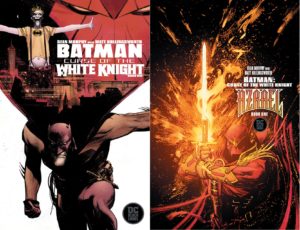 Issue No. 1 – September 2019
Issue No. 1 – September 2019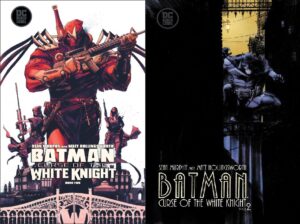 Issue No. 2 – October 2019
Issue No. 2 – October 2019 Issue No. 3 – November 2019
Issue No. 3 – November 2019 Issue No. 4 – December 2019
Issue No. 4 – December 2019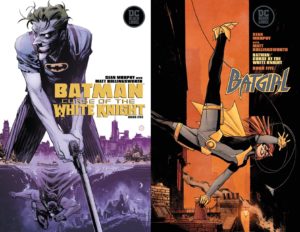 Issue No. 5 – February 2020
Issue No. 5 – February 2020 Issue No. 6 – March 2020
Issue No. 6 – March 2020 Issue No. 7 – April 2020
Issue No. 7 – April 2020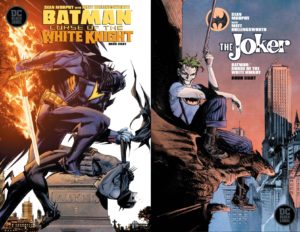 Issue No. 8 – May 2020
Issue No. 8 – May 2020



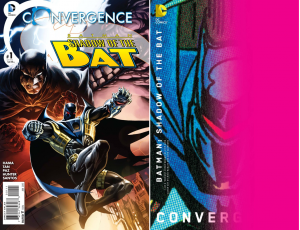
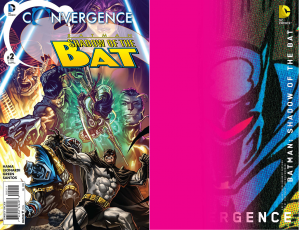
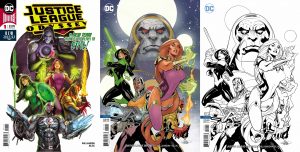 Issue No 1 – September 2018
Issue No 1 – September 2018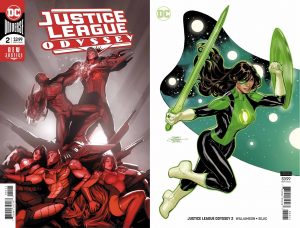 Issue No 2 – October 2018
Issue No 2 – October 2018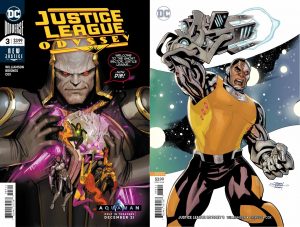 Issue No 3 – November 2019
Issue No 3 – November 2019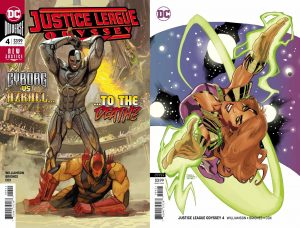 Issue No 4 – January 2018
Issue No 4 – January 2018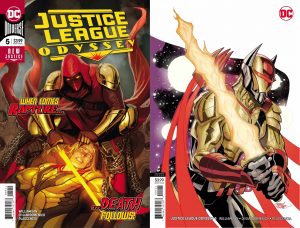 Issue No 5 – January 2019
Issue No 5 – January 2019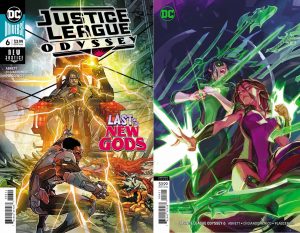 Issue No 6 – February 2019
Issue No 6 – February 2019